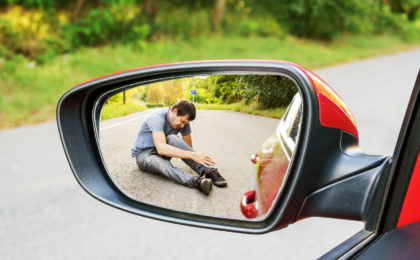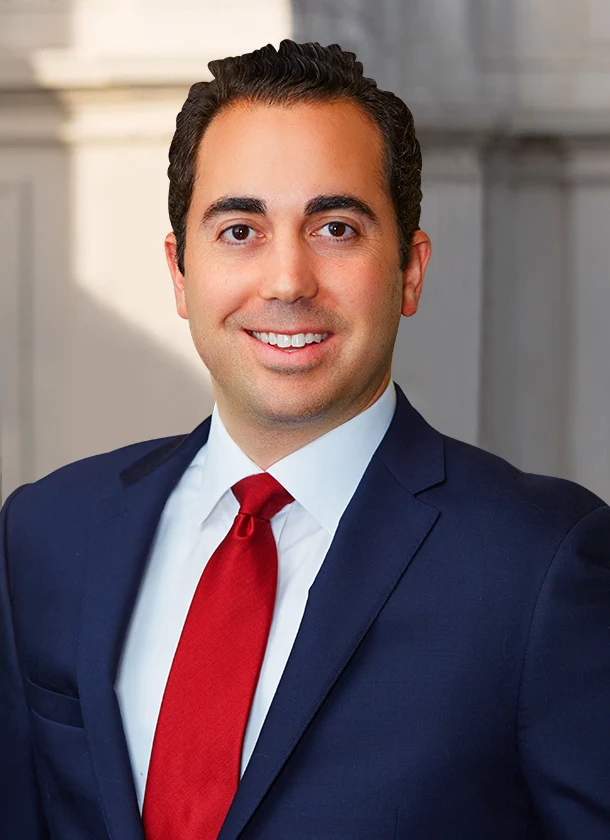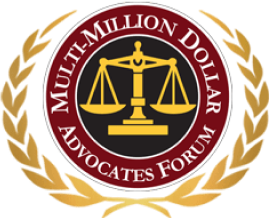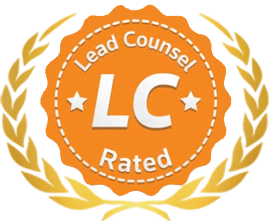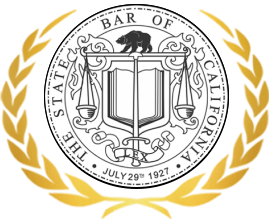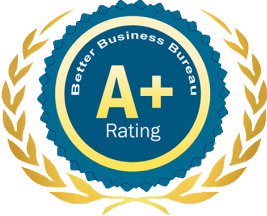If you were involved in a hit-and-run accident in California, you may wonder, “Can I sue for a hit-and-run accident?” California is an at-fault jurisdiction, which means that the driver who caused the accident is responsible for the damages they caused. However, if the driver who caused the hit-and-run did not have automobile liability insurance coverage, they may face personal liability for the injuries and damages suffered by the other party. It’s important to consult with an experienced hit and run accident attorney who can help you understand your legal options and determine the best course of action for your particular case.
Jurisdictions in the United States are either at-fault jurisdictions or no-fault jurisdictions. California is an at-fault jurisdiction, meaning that accident victims must establish that the other driver caused the accident. Also, all drivers who operate motor vehicles in California must have automobile liability insurance. A driver who is responsible for causing an accident might face personal liability for the personal injuries and property damage suffered by the other party if the driver did not possess automobile liability insurance coverage.
Those who suffer injuries during automobile accidents may seek financial compensation from the at-fault driver by filing a civil lawsuit against the driver for damages. Possible damages include non-economic damages, economic damages, and property damage. In some circumstances, it is possible for an injured victim to recover punitive damages. These types of damages are intended to punish the defendant and deter the defendant from committing the same act in the future. Arash Law, led by famous attorney Arash Khorsandi, Esq., can help injured victims recover financial compensation for their injuries.
The Elements of Negligence: Recovering Financial Compensation for Your Injuries
An injured party must establish four elements when seeking financial compensation for injuries suffered during a hit-and-run accident. The following are the four elements of negligence:
- Duty
- Breach of duty
- Causation
- Damages
The injured party must establish that the other driver breached their duty of care. The duty of care is measured by the reasonably prudent person standard. A driver must operate a vehicle in the manner a reasonably prudent person will under similar circumstances. A driver in a blizzard or a rainstorm must drive in the manner a reasonable person will during a blizzard or rainstorm or any other weather conditions.
The injured party must next establish that the breach constituted the actual and proximate cause of the injuries suffered by the plaintiff. Lastly, the injured party must prove they suffered damages due to the hit-and-run accident.
The following are some of the most common damages associated with hit-and-run accident cases:
- Psychological suffering
- Permanent disfigurement, physical impairment, disabilities, and physical scarring
- Loss of enjoyment of life
- Diminished quality of life
- Physical pain, emotional suffering, and psychological trauma
- Lost future earnings
- Lost benefits, lost wages, and diminished earning potential
- Hospice care costs
- Medical treatment bills
- Costs of surgical procedures
Property damage is a distinct claim from economic damages and non-economic damages. Automobile repair bills and the cost of replacement may be associated with property damage.
Do I Have the Right to Sue If I Was Injured In a Hit-and-Run Accident?

One important factor is the identity of the hit-and-run driver. Sometimes a party may have seen the license plate number on the hit-and-run driver’s automobile. Having the license plate number can make it easier to file legal claims against the responsible party.
You might file a civil lawsuit against the owner of the automobile even if another individual was driving the automobile at the time of the hit-and-run accident. In some cases, a vehicle owner may have permitted someone else to use their automobile, and that person ended up being the liable driver in a hit-and-run accident.
It is advisable to discover the identity of the hit-and-run driver and file a civil lawsuit against them. Sometimes parties may have difficulties identifying a hit-and-run driver. It can be difficult to file a civil lawsuit without knowing the identity of the individual who caused the hit-and-run accident.
What Options Do I Have If I Did Not Obtain the Hit-and-Run Driver’s License Plate Number?
If you’ve been involved in a hit-and-run accident and were unable to obtain the license plate number of the other driver, you may still have options for pursuing compensation. Filing an uninsured motorist claim or an underinsured motorist claim with your own insurance company can help you receive compensation for damages and injuries sustained in the accident.
However, your ability to sue for a hit-and-run accident will depend on the specifics of your case. If you were unable to identify the other driver, you may be limited to filing an insurance claim. It is recommended to consult with an injury attorney experienced in hit & run accidents who can help you understand your options and determine the best course of action for your situation.
However, not all automobile liability insurance policies have uninsured motorist and underinsured motorist coverage. An injured party who has this type of insurance can file a claim against their own insurance company for physical suffering, lost earnings, and medical bills.
Insurance companies must offer uninsured and underinsured motorist coverage to a specific dollar amount. An insured is not required to purchase this type of insurance coverage, but insurance companies have to offer uninsured and underinsured motorist coverage. It is important to review your automobile liability insurance policy to determine if you have uninsured or underinsured motorist coverage. You can ask the insurance company to provide you with a signed waiver.
Insurance Companies May Attempt to Deny You Financial Compensation for Your Injuries
Insurance companies are for-profit corporations, and they will do everything within their power to deny insurance claims. It may seem reasonable to speak to an insurance claims adjuster on the telephone, but doing so is generally not advisable for individuals who have suffered injuries in hit-and-run accidents. The insurance company may claim to support you, but this assertion is generally not the case. The conversations you have with the insurance company’s representative may be recorded. You do not want to admit liability or make any other statements that can reduce the likelihood of you recovering monetary compensation for your injuries.
Being Involved in a Hit-and-Run Accident without Suffering Physical Injuries
Property damage claims are typically resolved without one party filing a civil lawsuit against another. You may only have a property damage claim if you did not suffer physical injuries during a hit-and-run accident. An insurance company may proclaim not to be liable for the accident. The next step may be for you to file a civil lawsuit against the hit-and-run driver who caused the accident. Asserting a claim against the hit-and-run driver may be the only way you can obtain monetary compensation for any property damage caused by the accident.
Different factors can influence whether it is fruitful to file a civil lawsuit solely to assert a property damage claim. Other methods may be less time-consuming and more effective if you simply want to recover financial compensation for property damage. It is generally advisable to consult an experienced hit-and-run accident lawyer regarding all the options available to parties with property damage claims.
Parties Who Suffer Only Severe Emotional Distress
Some individuals who are victims of hit-and-run drivers may only suffer severe emotional distress as a result of the hit-and-run accident. The following are some of the most common examples of emotional distress:
- Disturbed sleep
- Post-traumatic stress disorder (PTSD)
- Flashbacks
- Night terrors
- Grief
- Depression
- Persistent fear
- Anxiety
- Emotional trauma
- Mental suffering
Individuals who suffer severe emotional distress may need psychological counseling and a long period of recovery. Depression, anxiety, and post-traumatic stress disorder are three common symptoms suffered by those who deal with emotional distress. A person suffering from emotional distress may be unable to work or take care of their home environment.
In some states, it is necessary that an injured party suffer physical injuries if they want to seek financial compensation for the severe emotional distress due to a hit-and-run accident. Many states presume that those who suffer physical injuries also experience emotional distress. California is the exception to the general rule. Those who suffer injuries in California may file a civil lawsuit only for emotional distress without having sustained any physical injuries.
The Statute of Limitations and Personal Injury Actions

Individuals who file civil lawsuits against private parties must file their legal claims within two years of the date of the injury. If a party wants to file a civil lawsuit against a governmental entity such as a state, county, or city, the injured party must file their legal claims within six months of the date of the injury.
Specific factors can influence when the statute of limitations period begins. Consulting a respected hit-and-run accident attorney is the best way to learn about the statute of limitations period in California.
The Time During Which an Injured Party Can Sue Another Party
California has two statutes of limitation periods. The first statute of limitations period applies to personal injury actions. The statute of limitations period for personal injury actions in California is two years from the date of the injury.
Individuals who want to file legal claims for property damage must file their legal claims within three years of the date of the property damage. Property damages typically involve the vehicle repair cost. It may require long periods of time for an injured party to have their automobile repaired. Also, a party may need to pay for additional repairs after a mechanic assesses the property damage.
Hit-and-run accident lawyers in California understand how to help clients understand all the details associated with the statute of limitations. Prospective clients need to know how the statute of limitations period may affect their legal claims.
Negligent Infliction of Emotional Distress Claims
The following elements must be proved if an individual asserts a negligent infliction of emotional distress claim:
- The other party was negligent.
- The injured party suffered severe emotional distress due to the accident.
- The other party’s negligent behavior directly caused the injured party’s severe emotional distress.
An individual who asserts a negligent infliction of emotional distress claim must have suffered severe emotional distress. It can be difficult for some parties to prove they suffered severe emotional distress without having suffered physical injuries.
Jurors must find that the liable party was negligent. Also, it must be established that the hit-and-run accident was caused by the liable party’s negligence. The jury must also determine if a reasonably prudent person under the same circumstances would be able to deal with the severe emotional distress and psychological suffering caused by the hit-and-run accident.
The reasonably prudent person is a fixed constant in negligence law. The jury must determine what a reasonable person will experience after reviewing the facts in the case. The jury may find that a reasonably prudent person will experience severe emotional distress from a specific hit-and-run accident. A party may then receive financial compensation for their non-economic injuries.
It may be difficult to determine how a jury will perceive a particular set of facts and circumstances. Many different variables can affect how a jury will react to any given case. Sometimes one small detail can make the difference in a party receiving financial compensation for their severe emotional distress.
Hit-and-Run Accident Cases in California and Wrongful Death Claims
Hit-and-run accidents cause fatalities every year in California. All automobile accidents can cause death, but it is particularly difficult for surviving family members to learn that their loved one died after being abandoned at the accident scene by a hit-and-run driver.
Those who have lost a family member due to a hit-and-run accident have two years from the date of the decedent’s death to file a wrongful death action. The statute of limitations period may not begin to run on the date of the hit-and-run accident. It may be some time after the date of the hit-and-run accident that the decedent succumbs to their injuries and dies.
If the decedent died at a later date, it might be difficult to receive financial compensation from the party who was responsible for causing the accident. The other party may claim that other medical conditions caused the decedent’s death. The party may only be interested in not being liable for the wrongful death claim.
Connecting the responsible party to the decedent’s death can be difficult if the decedent did not pass away until after the hit-and-run accident. The more evidence you have regarding the hit-and-run accident, the more likely it is that you can recover monetary compensation for your injuries.
The Statute of Limitations in California
Jurisdictions establish their own statute of limitations periods for different causes of action. Some claims may have a longer or shorter statute of limitations period. Understanding how the statute of limitations can affect your ability to seek financial compensation for your injuries is extremely important to your case. The more knowledge you have regarding the statute of limitations period, the more likely it is that you will file your civil lawsuit within the statute of limitations period.
Small Claims Court and the Statute of Limitations Period in California
Small claims courts can be busy in California. In 2017, the California Court Statistics Report stated that approximately 160,000 small claims were filed in California. Lawyers cannot represent clients in small claims courts. However, the following issues are relevant to many legal issues associated with small claims courts:
- An individual may file only two small claims that exceed $2,500 in any given year. No limitation exists for small claims below $2,500.
- Sole proprietorships are defined as individuals. Other types of businesses are limited to maximum claims of $5,000.
- An individual cannot pursue an amount above $10,000 in a small claims court in California.
Minor accidents that do not involve bodily injuries can often be resolved in small claims courts in California. Accidents that involve serious bodily injury and death need to be handled by an experienced personal injury lawyer. Many hit-and-run accidents in California cause serious bodily injury and death.
Injured Parties Should Seek Medical Assistance Immediately After a Hit-and-Run Accident

If you’ve been the victim of a hit-and-run accident, you may be wondering, “Can I sue for a hit-and-run accident?” The answer is yes, you can. However, it may be difficult to recover financial compensation for only severe emotional distress. It is important to understand that you can still seek monetary compensation for your emotional injuries. You may not have suffered any physical injuries, but do not let the lack of injury stop you from pursuing the financial compensation you deserve.
Contact a California Hit-and-Run Accident Attorney Today
Call Arash Law, spearheaded by Arash Khorsandi, Esq., at (888) 488-1391 if you suffered an injury in a hit-and-run accident in California. We have decades of experience representing clients in hit-and-run accident cases. We have recovered over $500 million for clients across California.
We serve clients in San Francisco, Riverside, Sacramento, San Jose, Los Angeles, San Diego, Sherman Oaks, and throughout California. Our hit-and-run accident attorneys can help you seek financial compensation for






